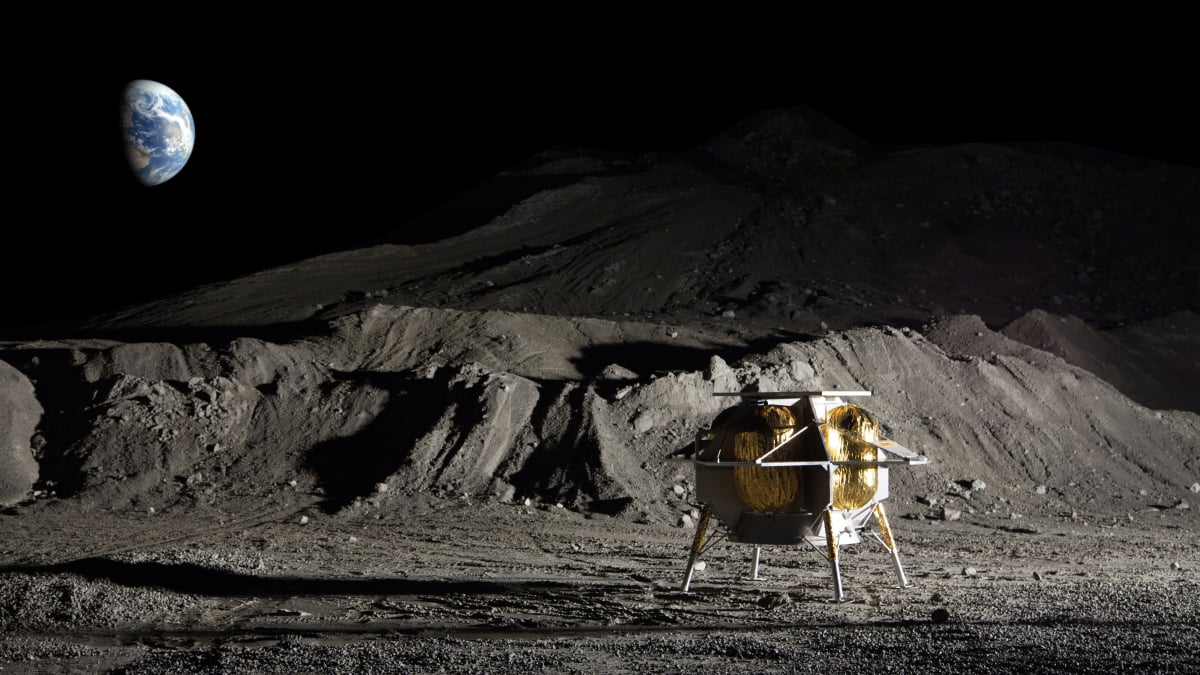Entertainment
9 thrilling 2023 space launches to look forward to

Let’s be real: Who wants to follow a bang-up year like 2022 into the cosmos?
The new Space Age came alive with the opening of the James Webb Space Telescope, the new super-sensitive observatory in the sky, and the maiden voyage of Artemis, NASA‘s moon-to-Mars campaign that will return astronauts to deep space. Not to mention that time the U.S. space agency successfully moved an asteroid just to prove it could.
But 2023, which could become known as the Year of the Lunar Landers, promises to keep launch pads scorching hot. Many missions are setting the stage for NASA’s Artemis endeavors as well as a future lunar economy. That’s largely thanks to the agency’s Commercial Lunar Payload Services Program, established in 2018 to recruit the private sector to deliver cargo to the moon.
Here’s a round-up of some of the upcoming space missions slated to (fingers crossed) lift off this coming year.
A word to the wise: Consider these no-earlier-than dates. When it comes to rocket launches, often delayed for a host of reasons, we’ll quote Jim Free, NASA’s associate administrator for exploration systems development: “Plan a week trip to Florida for vacation, and you might see a launch.”
Lunar lander to study moondust and more: March 2023
NASA selected commercial partner Intuitive Machines to send a lander to Schroter’s Valley, a region on the nearside of the moon. During the IM-1 mission, the lander, called Nova-C, will study how rocket exhaust and space weather affect the lunar surface. The mission is slated to launch on a SpaceX Falcon 9 rocket from Cape Canaveral, Florida.
The spacecraft, a six-sided cylinder standing on six legs, will carry five NASA instruments, among other unrelated commercial pieces of cargo, and demonstrate advanced landing technology. Fun fact: The lander will stay warm in frigid space like a lot of people do — with a coat. Rather than reinvent the wheel, Intuitive Machines partnered with Columbia Sportswear to use some of its insulation material on the spacecraft.
Lander preps for future ice-mining mission: January — March 2023
NASA tapped Astrobotic, another commercial partner, to deliver instruments and experiments to the lunar surface. The Peregrine-1 mission is expected to leave Earth on a United Launch Alliance Vulcan Centaur rocket from Cape Canaveral, Florida, in the first quarter of 2023.
Peregrine is a precursor to the lander Astrobotic will eventually use to send NASA’s VIPER rover to drill for ice on the moon. It will carry versions of instruments the U.S. space agency wants to test before that important, crewless water-hunting mission, targeted for 2024. The boxy four-legged Peregrine will touch down on the “Lake of Death” region, a lava plain in the northeastern part of the moon’s nearside.
SpaceX’s Starship to embark on first orbital spaceflight: 2023

SpaceX stacked the Starship rocket at its South Texas launchpad in advance of a company update on the project in February 2022.
Credit: JIM WATSON / AFP Via Getty Images
Standing 400-feet tall, SpaceX’s Starship, an entirely reusable stainless steel contraption, could have about twice as much launch power as NASA’s mega moon rocket.
The Starship is a super-heavy-class rocket and spaceship that NASA plans to use for shuttling astronauts from its future lunar-orbiting base to the moon’s surface. That’s in addition to Elon Musk’s vision to use a fleet of Starships to one day build a settlement on Mars.
When will Musk debut this monstrous machine for its first orbital spaceflight? In true SpaceX fashion, the company is keeping the rest of us on a need-to-know basis. During a PR event last February, Musk said it would happen before the end of 2022.
Want more science and tech news delivered straight to your inbox? Sign up for Mashable’s Top Stories newsletter today.
Japan to send its own spaceship moonbound: April 2023
Not all of these crewless moon missions will leave from Florida’s Space Coast. The Japanese space agency, aka JAXA, will send its own lander to the lunar surface to demonstrate advanced precision landing with a small explorer.
The SLIM mission, short for Smart Lander for Investigating Moon, is a rideshare flight carrying various payloads. It’s expected to launch from the Tanegashima Space Center in Japan.
India gets do-over for failed moon mission: June 2023
India’s space agency will try again to send a lander and rover to the highlands of the moon’s south pole, following the Chandrayaan-2 mission, in which the spacecraft crashed as it tried to land in 2019.
During this next Chandrayaan-3 mission scheduled for mid-2023, the Indian Space Research Organization plans to use a similar rover as the one used in the previous failed mission but with improvements to help stick the landing. The mission will launch on an LVM 3 heavy-lift rocket from a launch pad on Sriharikota, a barrier island of southeastern India.
Mission to deliver a NASA moon rover: June 2023
Contractor Intuitive Machines has the added responsibility of sending a NASA rover near the south pole of the moon later in the year. This mission, referred to as IM-2 or Prime-1, is to land and test a drill and mass spectrometer, a device that identifies the kinds of particles in a substance.
As currently planned, another spacecraft, NASA’s Lunar Trailblazer, will hitch a ride on this flight as well. The small satellite will orbit the moon to map out the locations of lunar water. The mission will launch on a SpaceX Falcon 9 rocket no earlier than June from Cape Canaveral, Florida.
Russia to ship its first moon probe since the ’70s: July 2023

A Soyuz 2-1B rocket prepares to launch a French spacecraft in this December 2006 photo.
Credit: STR / AFP via Getty Images
The former Soviet Union, which collapsed in 1991, sent many robotic spaceships to the moon, but the upcoming Luna 25 will be the first lunar mission in post-Soviet Russian history.
Roscosmos, the Russian space agency, wants to send the lander to a region of the moon’s south pole. It will study the moon’s soil and atmosphere and help to develop landing technology. The spacecraft will launch on a Soyuz-2 rocket with a Fregat upper stage from a Vostochny Cosmodrome launch pad in Kazakhstan.
Before Russia invaded Ukraine, the European Space Agency was expected to partner on the mission by providing a camera that would assist with landing. But Europe pulled out of the deal, along with other Russian space collaborations, because of the geopolitical conflict.
NASA to scope out its first metal asteroid: October 2023

NASA’s Psyche mission will explore a metal asteroid for the first time.
Credit: NASA / JPL-Caltech / ASU
And now for the palate cleanser from all of those 2023 lunar missions: For the first time, NASA will study an asteroid mainly composed of metals, like iron and nickel, from orbit.
The space rock 16 Psyche has long-intrigued planetary scientists, some of whom think it is all that’s left of an ancient planet after collisions that stripped away its rocky exterior.
But hold onto your hats. If the spacecraft leaves on schedule in October 2023, it won’t reach its main asteroid belt destination until August 2029. The orbiter requires a gravity assist from Mars about three years into its journey. NASA plans to launch the mission on a SpaceX Falcon Heavy rocket from Cape Canaveral, Florida.
European mission heads to Jupiter’s moons: 2023

The European Space Agency plans to study Ganymede and other Jupiter moons.
Credit: Illustration by ESA
The European Space Agency has its sights set on a mission to Jupiter, where it will fly by three of its icy moons and orbit one in particular, known as Ganymede.
The so-called “Juice” mission (a stretch to call an acronym for Jupiter Icy Moons Explorer, though maybe it’s fitting for Ganymede’s mythological namesake, who served as Jupiter’s personal cupholder), is intended to focus its research on Ganymede as a potential habitat, looking at its ocean layers and atmosphere.
ESA wants to launch the spacecraft on an Ariane 5 rocket from its spaceport in French Guiana on the South American continent. After a seven-year space cruise. It will use gravity assists from Earth and Venus to orbit Jupiter in 2031. It will also check out Jupiter’s moons Callisto and Europa along the way.
Other 2023 space mission events
-
June 20, 2023: The European Space Agency’s Bepi-Colombo mission is expected to make its third Mercury flyby.
-
Aug. 21, 2023: NASA’s Parker Solar Probe should make its sixth Venus flyby on its sun-studying mission.
-
Sept. 24, 2023: NASA’s OSIRIS-Rex mission will return to Earth following its long voyage to the carbon-based asteroid Bennu. The spacecraft, which collected samples in October 2020, is expected to land at the Utah Test and Training Range, west of Salt Lake City.
-

 Business7 days ago
Business7 days agoThis camera trades pictures for AI poetry
-

 Business6 days ago
Business6 days agoTikTok Shop expands its secondhand luxury fashion offering to the UK
-

 Business7 days ago
Business7 days agoBoston Dynamics unveils a new robot, controversy over MKBHD, and layoffs at Tesla
-

 Business5 days ago
Business5 days agoMood.camera is an iOS app that feels like using a retro analog camera
-

 Business5 days ago
Business5 days agoUnitedHealth says Change hackers stole health data on ‘substantial proportion of people in America’
-

 Business4 days ago
Business4 days agoTesla’s new growth plan is centered around mysterious cheaper models
-

 Entertainment5 days ago
Entertainment5 days agoFurious Watcher fans are blasting it as ‘greedy’ over paid subscription service
-

 Business4 days ago
Business4 days agoTwo widow founders launch DayNew, a social platform for people dealing with grief and trauma




























